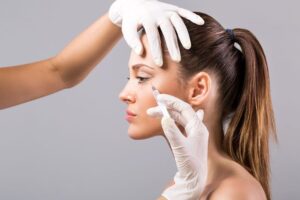This therapy was born in France, in the thermal waters station of Royat, near Clermont Ferrand. They’re a group of cardiologists ascribed to the hospital of Clermont Ferrand. They began to treat patients with peripheric organic and functional arteriopathy (Atherosclerotic, Buerger’s disease, Raynaud’s disease, etc.).
In 1953 the cardiologist M.D. Jean Baptiste Romuef published a paper about his 20 years of experience in the subcutaneous injection of CO2. Afterwards, the Parisian cardiologist M.D. Jerome Berthier, along with M.D. Luigi Parassoni from Gallarate started its application on patients with cellulite. Until 1983 only 40200 patients had been treated in Royat. By 1994, 20,000 patients were treated per year. This number of patients not only confirms the efficacy of the therapeutic method but also its security of this.
Carbon dioxide (CO2) is an odourless, colourless gas, the first to be discovered in history (Van Helmont, 1648). Intradermal administration of carbon dioxide improves skin laxity by improving dermal collagen. When administered subcutaneously, CO2 immediately diffuses at the cutaneous and muscular microcirculatory level. At the vascular level, it increases vascular tone and produces active vasodilatation at the microcirculatory level, improving microcirculation, tissue metabolism and oxygenation, and lysis of the fat cells in the subcutaneous tissue.
Lipodystrophy and edematous fibrosclerotic panniculopathy are pathologies in which microcirculatory disorders and resulting interstitial oedema constitute triggering factors that support the pathological process. Microangiopathy due to stasis is the morphological substrate.
Since it improves capillary blood flow and reduces stasis, carbon dioxide therapy contributes to restoring the microvascular tissular unit exchanges.
Most of the gas is eliminated through the lungs (expiration), while a smaller portion is converted into carbonic acid at the tissue level and then eliminated through the kidneys. Although it is toxic when inhaled (10% in the air may cause asphyxia), CO2 trans- or subcutaneous therapeutic administration or intra-abdominal administration aimed at video laparoscopy have not shown any toxic effects, even at the highest doses (2-3 litres). It differs from other gases because it does not cause nitrogenous embolisms, unlike, for example, oxygen-ozone therapy.
Carboxytherapy is one of the so-called lunch procedures, as no hospitalization or anaesthesia is required. Patients can resume their daily routine immediately after the procedure.
Clinically proven efficacy, simplicity and absence of toxicity and complications make Carboxytherapy highly desirable and effective treatment.











